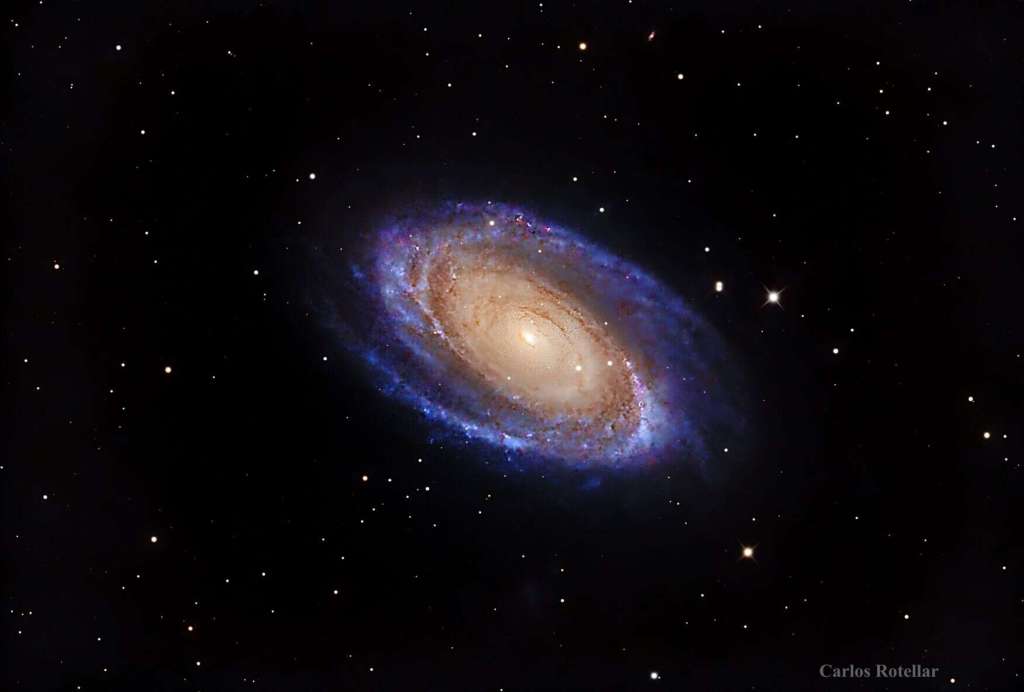Bode’s galaxy a grand design viewable by binoculars
Published 10:38 am Thursday, September 5, 2024

- Bode’s Galaxy (M81) is a grand-design spiral galaxy located about 12 million light years away in the constellation Ursa Major
In July, we discussed the Cigar Galaxy (M82) discovered by Johann Elert Bode. This month we present the galaxy that bears his name.
Bode’s Galaxy (M81) is a grand-design spiral galaxy located about 12 million light years away in the constellation Ursa Major with a diameter of 90,000 light years and containing between 250 to 500 billion stars.
As we saw last month, it is interacting with the Cigar Galaxy (M82) separated by 130,000 light years.
Bode’s Galaxy spiral arms are filled with dust and gas that are actively forming stars, and its core contains a supermassive black hole with a mass of about 70 million solar masses.
A grand design spiral galaxy is a type of spiral galaxy with prominent and well-defined spiral arms, as we can see in the image.
The fairly large central region of Bode’s Galaxy contains mainly older stars giving it a yellowish cast. The bluish well defined spiral arms that contain numerous purple dots are home to many young stars. It is fairly bright with an apparent magnitude of +6.8 and in a clear night it can be spotted with binoculars.
In astronomy, apparent magnitude refers to how bright or dim an object appears in the sky from earth and not how big it appears in the sky. Absolute magnitude refers to how bright an object actually is at a closer distance. The brighter an object appears in the sky the lower its apparent magnitude is.
The Greek astronomer Hipparchus developed a scale to describe the brightness of the sky objects. He gave an apparent magnitude of 1 to the brightest object he could see, and a 6 to the faintest one. Since then, with the use of telescopes, the scale has been expanded from the Sun being the brightest with an apparent magnitude of -27.5 to the faintest object detected by the James Webb Telescope with an apparent magnitude of +34 or more, depending on the observation time. Our naked eye can detect objects as faint as +6.
This is important when taking photos from my drive way. Knowing the limitations of my telescopes, helps when choosing which objects to photograph. My largest telescope has a diameter of 8 inches and a stellar magnitude of +14.2.
The second brightest object in the sky is the moon with an apparent magnitude of -13, however, the moon does not emit any light of its own; neither do any of the planets. They just simply reflect the light of the Sun.
– Dr. Carlos Rotellar is a Bowling Green nephrologist who has had an interest in astrophotography and has been taking images of the universe from his driveway for several years. Website: Skyastrophotos.com.





